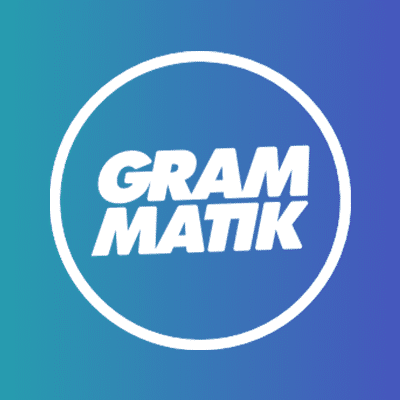Every service or business in each sector has its own terms or jargon — in our case, PR terms. And jargon can be great — how often do you really want to say high performance computing (HPC) in its long form? But jargon can also be incredibly confusing, and sometimes even exclusionary to those who don’t know what it means.
So, in order to make sure you feel as comfortable as possible when talking to us or others in the tech PR space, we thought we’d share our PR glossary — a translation of all the weird and wonderful things we may ask of you or tell you about.

Most widely used PR terms
- Press Release
Kicking off the PR glossary is the humble press release, sometimes also called a news alert. This should be a document detailing a business announcement such as a new product or service, a new client win, an appointment, a piece of research etc. Press releases should be factual pieces of information journalists can read and understand quickly. It should state who, what, why, how and when but omit fluffy adjectives that hold no meaning – save those for the quotes, if you really must. Quotes should come from whichever senior exec is the first point of call for the announcement, and if it’s an appointment should come from the appointee and their line manager (if they have one).
- Boilerplate
The boilerplate is sometimes viewed as the most important part of a press release. In its simplest form, it’s a summary of key highlights for your company — what do you do, why do you do it and who do you do it for. Most importantly, why should the journalist care? Often they will scan a release and jump to the boilerplate, perhaps to remind themselves of whether they wrote about you before, but often to understand who the company is and whether they are ‘worth’ writing about i.e. is the story going to be of interest to their audience?
- Headshots & Bios
You might think this isn’t PR jargon, or isn’t needed in this list of key PR terms. But, we’d argue otherwise. A headshot is a profile image of a spokesperson and should be min. 2MB. We recommend having both a portrait and landscape version, as well as colour and B&W versions. And please, no pub photos — in fact, no drinks at all. Each publication has its own brand and style, and so having a variety of options available can help speed up the process from submission to publication.
A bio is a short biography for a spokesperson and should generally be 150-200 words for print and online publications, although longer bios can be useful for speaking engagements. Highlight who the spokesperson is, what they do and why they matter.
- Press Kit
A press kit holds everything a journalist might need to know about the press release you’re sharing. It will contain all of the above plus any additional imagery if it’s for a new product, for example, and can also include things like spokesperson bios, product specifications — especially if highly technical, and methodology breakdown for a piece of research.
- Briefing Doc
A key part of PR is pitching and securing journalist interviews for clients. Another key factor is ensuring your clients know what to say and how to say it before being recorded. Briefing docs should explain who the journalist is, what the publication focuses on, and what topic has been used to secure the interview. Sharing previous articles, podcast episodes or TV shows said journalist has created is a great way to help your client understand what they might be walking into. It’s also worth stating what your client shouldn’t say, as well as what they should. Bright red usually works best for those sections
- MUV / Circulation / Readership
MUV is an abbreviation of ‘monthly unique visitors’ — it’s a PR term we use regularly to convey the size and popularity of a publication’s website. It tells you how many ‘unique’ visitors a website receives each month and doesn’t take into account returning visitors. Within this sits a publication’s readership — the total number of readers, including second-hand. There should also be information on who is actually reading the publication according to seniority and sector. People sometimes get this term confused with circulation, which is only used to describe the number of print issues distributed.
- Byline / Op-ed
One of the more esoteric entries to the PR glossary next. When we say we’ve secured a byline or op-ed, it means we have secured a thought leadership or opinion piece for you. As the name suggests, these should be opinion-led and cannot be salesy at all. Most of the time you cannot mention your company or products unless explicitly stated. It’s your expertise that editors are after — what’s changing? What’s new? What should people in your industry be aware of and why should they care?
- Soft opps
These are pr terms for recurring features that happen every month such as 3D World’s A Day In The Life, City AM’s Office Politics, and Metro’s Behind The Idea.
- Hook
When pitching for an interview or byline opportunity, we often look for a news hook; it’s a story or angle the general public or business world is currently talking about which we can tie an opinion to so it’s topical and relevant to a publication.
- CTA
This PR term is also a key marketing buzzword. A “Call To Action” (CTA) is usually something we’ll talk about when helping produce company blogs or Landing Pages (LPs) for clients. For example, if you’re pushing a new eBook or Whitepaper you should add a CTA to relevant blog posts directing readers to download whatever relevant additional content you want to raise awareness of.
- Earned, Owned and Paid Media
This is one everyone can get a bit confused by. Earned media is where a client gains coverage in a publication or elsewhere without paying for it. This includes press release coverage, published byline articles, reviews and mentions in other people’s articles. It usually comes about through an effective PR strategy to raise the profile of a company or spokesperson. Owned media is content a company writes and hosts themselves such as a company blog or their social media pages. Paid media is – as the name suggests – where you pay for coverage such as display ads, native ads, paid influencers and other sponsored opportunities.
We could create a small dictionary with all the PR terms we might use, but these are the most common ones you’re likely to hear from a tech PR on a day-to-day basis. If you’re considering working with a Tech PR agency, this PR glossary might just help you get past that initial jargon barrier.
If you enjoyed this piece, be sure to check out some similar content on our blog.

©️2024 Grammatik Agency, Second Home, 125–127 Mare St, London E8 3SJ.
[email protected]
+44 (0)20 3950 7057 Privacy policy